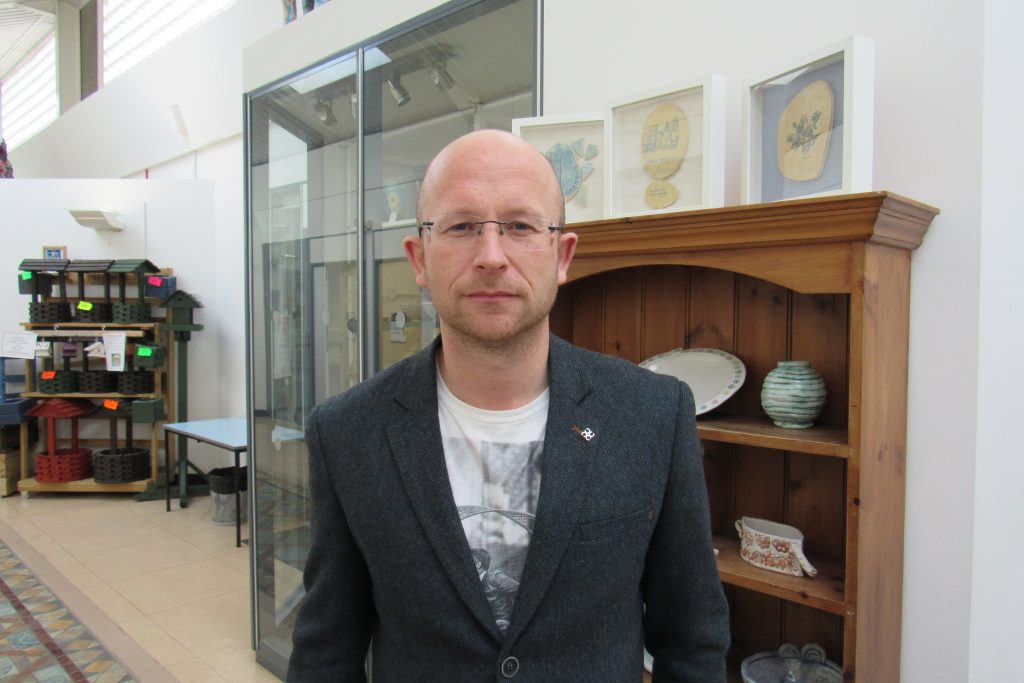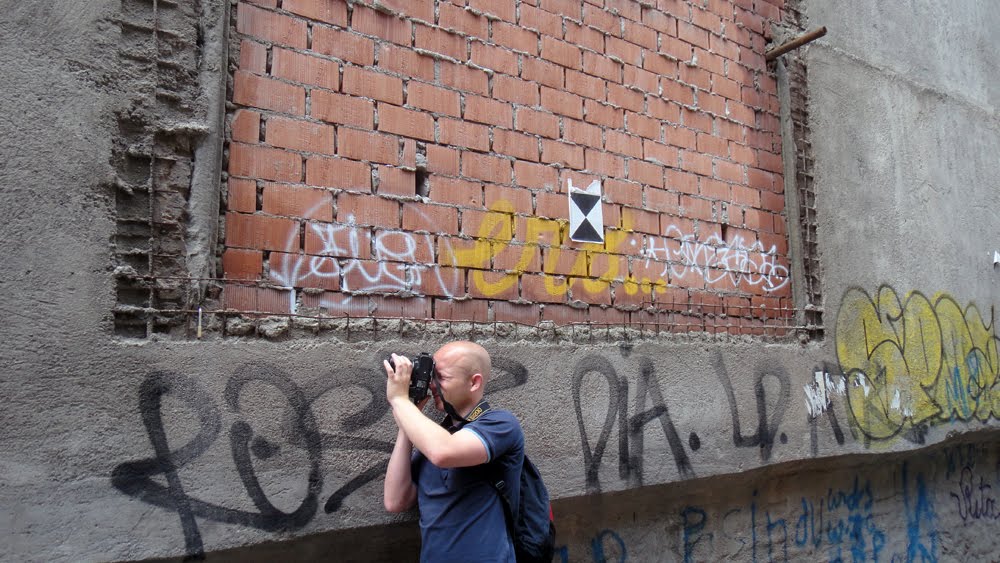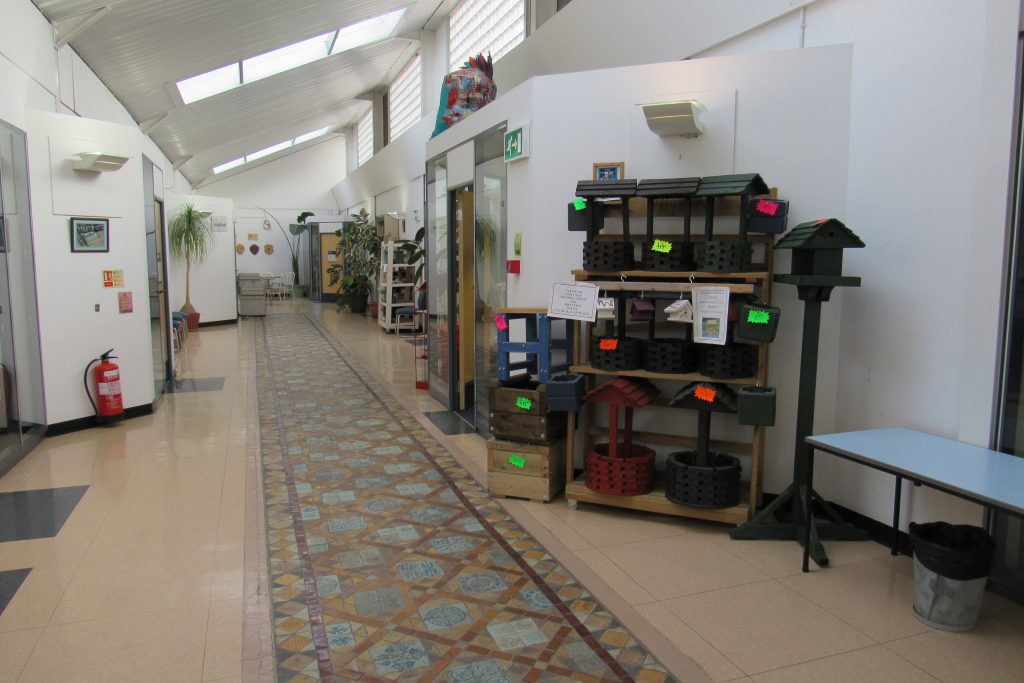Brychan Tudor explains the changes he is hoping to implement to Disability Arts Cymru this year, and how the creative industries are leading the way in inclusively for disabled people.

“Imagine being locked in a coma. Being completely paralysed, but also totally aware of the world around you. It looks as though you are completely uncontactable, but you can still see everything. Now, use your imagination to remind yourself of some of your favourite memories and transport yourself to that place…”
Meeting Brychan was an experience to say the least. After explaining the premise of one of his favourite novels The Diving Bell and the Butterfly, and by drawing out a variety of symmetrically aligned shapes on to a piece of paper as he spoke, he transformed from being the organisation’s apprehensive newcomer, to someone who was now quite clearly in his comfort zone.
“What excites me about joining Disability Arts Cymru,” explains Brychan, “is that I have a first-hand understanding of the benefit that creative practice can have on people’s lives who are suffering from certain disabilities.” Having worked as a Creative Director, a curator and a teacher before undertaking his current position as DAC’s new director, Brychan expresses an essential need to promote diversity and individuality within the arts.

“We all think about things in different ways and we all have our own challenges,” explains Brychan, as he begins to draw three identical squares next to one another, “The creative sector highlights an importance in prioritising diversity. We are not just square blocks that can be piled on top of each other, everyone is creatively different and we need this to be celebrated. Disability Arts Cymru is a great platform to show this.”
Disability Arts Cymru is a revenue funded arts organisation ran by the arts council which is located in the Sbectrwm Community Centre in Fairwater, Cardiff.
It is the current leading organisation in Wales which makes accessibility in the arts possible to people with a disability or impairment.
Their main agenda is to ‘make the arts in Wales creative and diverse in equal measure, with disabled and Deaf people at the very core.’

Having only been in his current role for three days, Brychan is still coming to terms with his new position, but is nevertheless excited to join the organisation at a critical moment in its 30-year history. With former director of Disability Arts Cymru, Sara Mackay leaving after 27 years of leadership, the organisation is preparing to undertake a change in its direction which is expected to take up to 2 years to complete.
“It’s a really important moment in the organisation’s history,” says Brychan. “We have got an incredible platform to really refocus the effect that the organisation has on people’s lives in Wales”.
This year at Disability Arts Cymru, Brychan hopes to bring more diversity amongst the 400 members that are currently supported by the organisation as well as provide more opportunities to help a variety of artists to sell and develop their work, no matter what level of skill they may be. “I want to diversify the organisation so we can help and support a range of different people with different disabilities at different stages in their journey of creative development.”
Recent statistics have shown that approximately 1 in 7 people in Wales have some form of disability which affects them on a day to day basis, with an additional 1 in 3 who are affected by their mental health. “If you combine those figures together,” explains Brychan, “you could be talking around 1 in 4 people, which is a huge number.”
The concerns raised by Brychan are reflected throughout the rest of the United Kingdom.
The Office for Disability Issues recently identified that roughly 1 in 20 people across the UK have some form of diagnosed disability. The creative industries, however, have withstood long lasting criticism due to a lack of diversity and integration of disabled people.
Brychan hopes to see a positive change. He believes that the creative industries are making creative practice, such as fine art, film or theatre, more openly available to people with disabilities. “We are all very different,” repeats Brychan, “We need diversity in the arts, and we should celebrate that.”
“Creative practice is a wonderful way to explore our differences,” says Brychan, as he starts to navigate his pen around another blank piece of paper. “As artists, we are the physical response to things that have happened throughout our lives. I’m not saying that if you are in a wheelchair, for instance, you’re going to make work about being in a wheelchair, but what I am saying, is that it would certainly inform your practice in the same way that it informs your life and your relationship with your environment.”
Brychan acknowledges that the work of organisations such as Disability Arts Cymru provide great ways to promote change with regard to accessibility and inclusivity. The main way that Brychan sees a growth in change is through developing assistive technologies and augmented realities as a way to allow higher levels of inclusivity for disabled people.
“There’s a really interesting axis for new technologies in this sector,” explains Brychan, as he looks intently at me, “There are new spaces on the Strand in London that have been created recently where they have an immersive installation.”
Immersive installations, as Brychan explains, are galleries which attempt to combat visionary loss and blindness by offering a sensory experience for those who would not be able to previously be a part of the event. Galleries such as Ryoji Ikeda’s, ‘Test Pattern No12’ at The Strand provide a sensual journey to cater for all audiences.
Video: Ryoji Ikeda’s immersive installation in the Strand.
Despite cuts on the arts increasing, Brychan seems hopeful for the future of inclusivity.
“There are many things that haven’t yet been answered in the arts. For instance, how can we help people with visual impairment to experience live music? And how can we use technology to help people with hearing impairments to experience ballet?”
The prospect of the future looks hopeful for the inclusivity of disabled people in the UK.
At this critical time for Disability Arts Cymru, the organisation could not be in safer hands. As they embark on their journey for change, Brychan’s enthusiasm and passion for the arts is clearly a force to be reckoned with.
